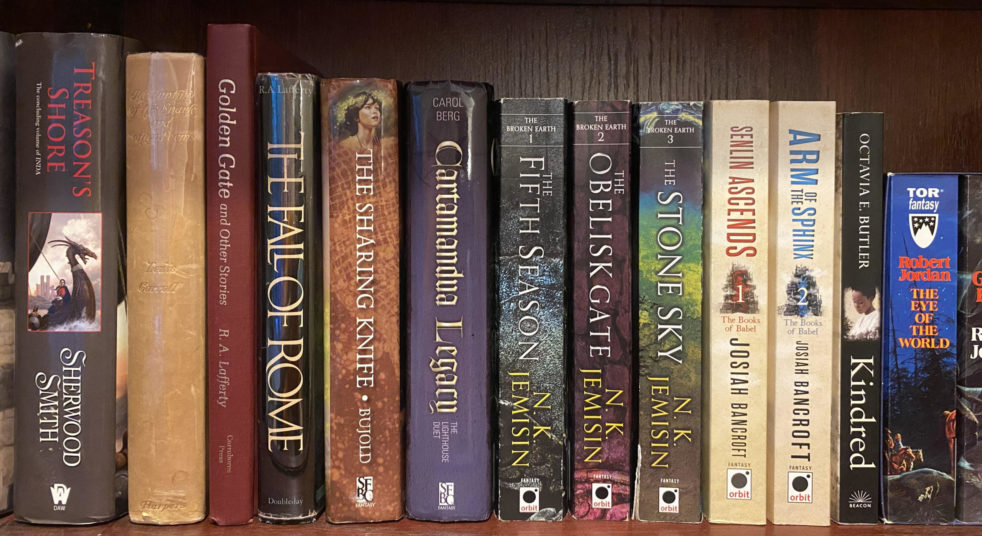
I got into T. Kingfisher a little over two years ago with the delightful middle grade novel A Wizard’s Guide to Defensive Baking, and I thought there was an author binge incoming. As it happens, T. Kingfisher writes a lot, and I haven’t been able to keep up. But she’s a double Hugo finalist this year, so I’ll have two picked for me, starting with Best Novella Finalist (despite it technically being just over the novel/novella border) What Moves the Dead.
What Moves the Dead is a retelling of Edgar Allen Poe’s “The Fall of the House of Usher” with a non-binary lead from a fictional country in Eastern Europe. It expands the horrifying-but-unexplained elements of the short story into a longer work that tries to keep the horror while adding more narrative logic. The lead, a solider from a country where “soldier” has its own pronoun set (ka/kan) visits the crumbling Usher house in an attempt to aid a pair of old friends concerned that their minds and bodies are rapidly deteriorating.
There’s no real secret as to where the story will go. Anyone familiar with the Poe short will know the main beats in advance, and the descriptions of the varied fungal life surrounding the unnatural waters of the tarn leave little doubt as to the method to the madness. And so it’s a novel that stands and falls purely based on the execution.
And there’s quite a bit to like with the execution. The lead is a refreshingly logical character dropped into a horror story, the prose makes for an easy read, and the plot keeps moving at a steady clip that prevents the tale from ever being bogged down. But with the major beats known in advance, it’s not really a story about the plot, nor is it an especially character-driven piece. Those elements are plenty to make it an entertaining read, but true excellence must come from either the atmosphere or the thematic work.
And both of these elements are solid, but neither quite rises to exceptional. The country of Gallacia and its treatment of gender seemed to get the most focus outside of the horror elements themselves, and I’m sure it will be explored in future installments of what appears to be intended as a series (presumably with the same central character finding kanself in various horrifying scenarios), but it didn’t get enough attention to add a lot of depth to the novel. And while the creepy house, uncanny tarn, and unnatural hares—not to mention the Usher siblings themselves—were written vividly enough to build a sense of dread, the quick pacing and colloquial dialogue keep the atmospheric tension from being too thick. A Gothic horror retelling with much of the plot known in advance needs a real A+ atmosphere to make itself memorable. But like in so many other elements, the atmosphere is merely pretty good.
All told, it makes for a quick and easy read that’s sufficiently creepy to hold the reader’s attention. But it lacks the standout element needed to make it truly memorable. Kingfisher remains reliable for quality reads, but this doesn’t hit the heights of some of my other favorites.
Recommended if you like: Gothic retellings, Kingfisher’s style.
Can I use it for Bingo? I suppose it’s hard mode for Horror and Retelling, and it’s also a Book Club selection.
Overall rating: 15 of Tar Vol’s 20. Four stars on Goodreads.
